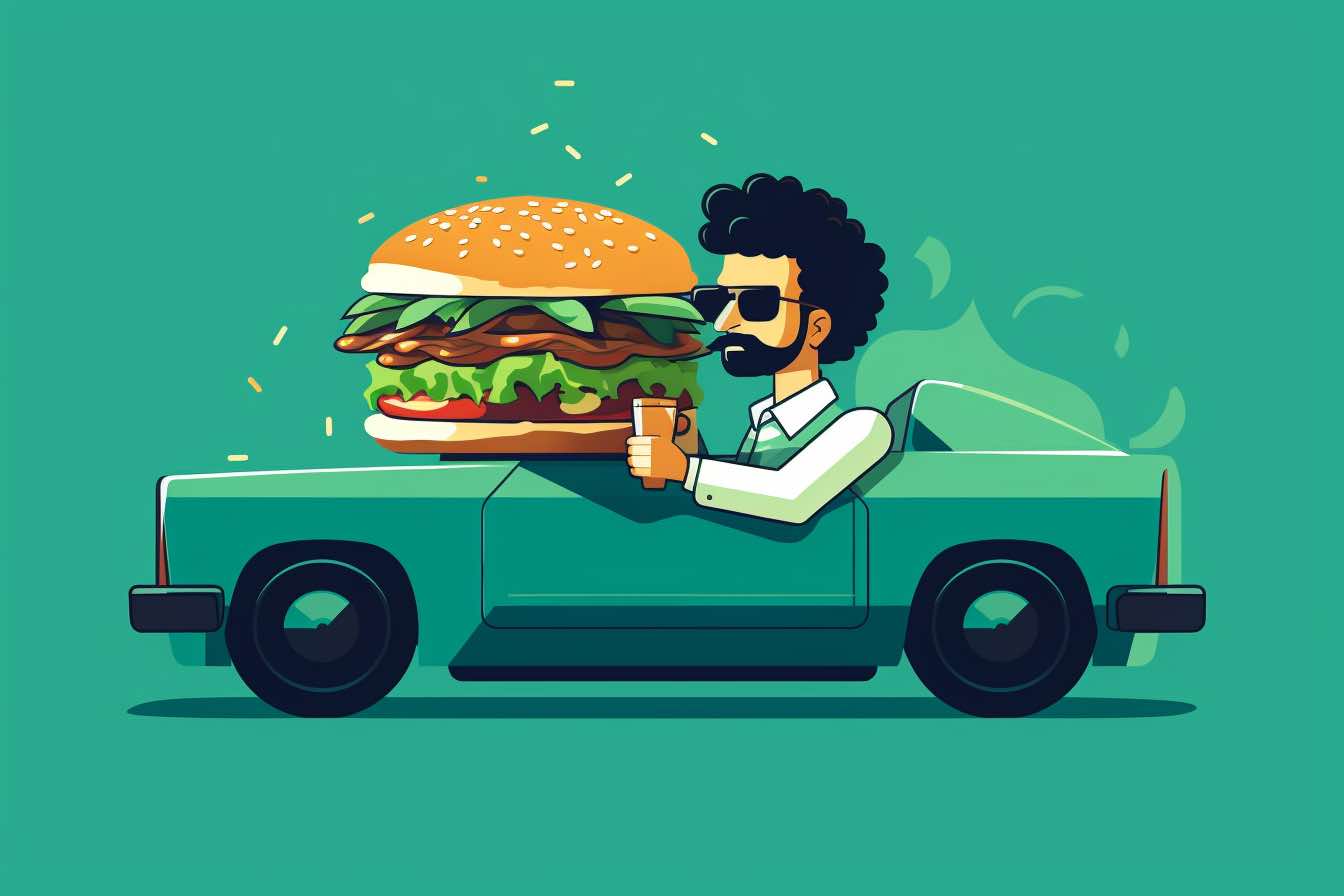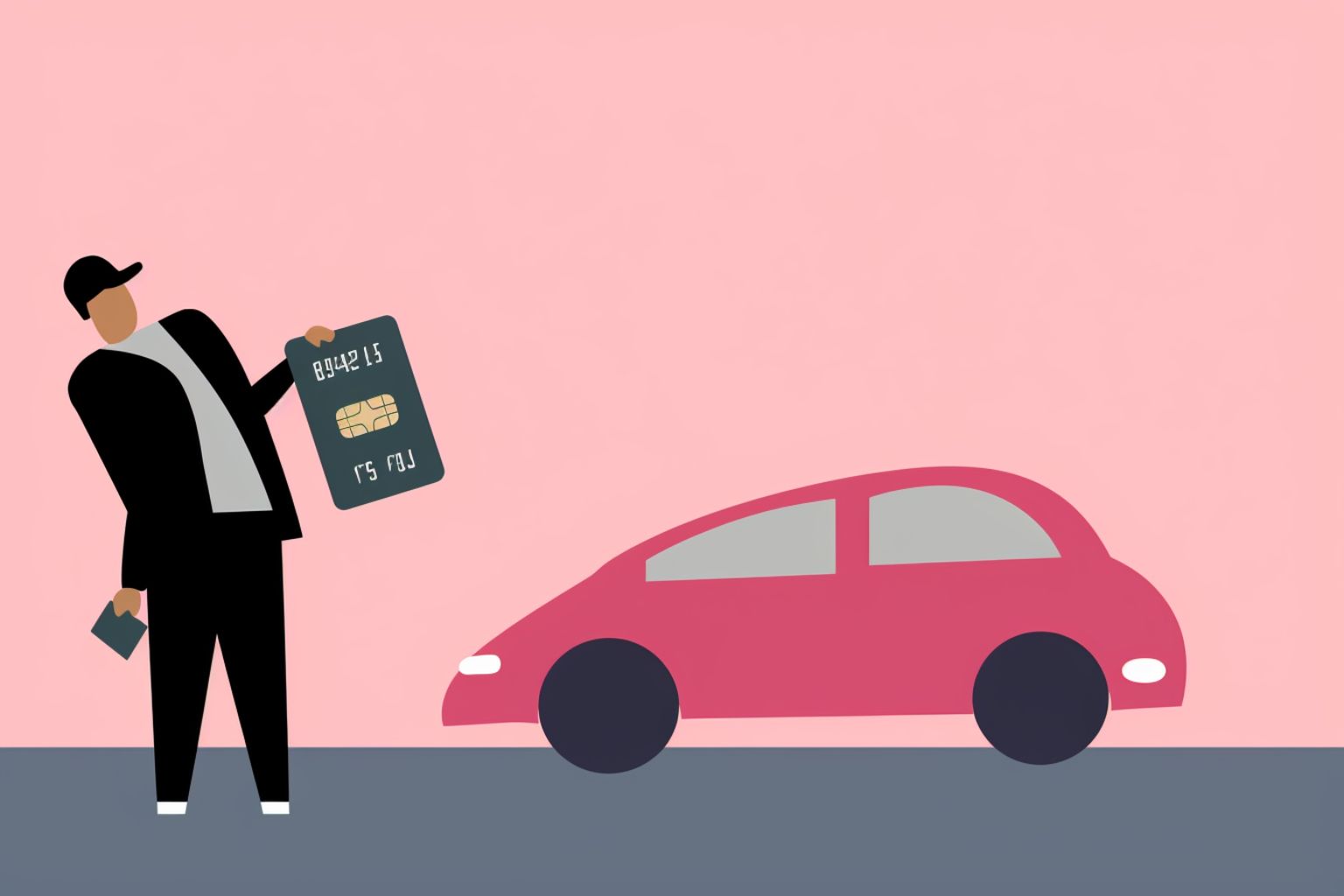Where should I eat when I’m traveling? It’s one of the first questions people ask when they hit the road, but it’s one of the last things they plan for. Where’s a reliable guide to travel food when you need one?
There’s so much that can go wrong. Consider what happened to Nathalie Poulin when she had dinner at Planet Hollywood during her Walt Disney World vacation.
She ordered a chocolate milkshake, took a few sips and realized that the chunks of ice were actually glass.
“I took out a small piece of glass in front of the manager and the chef’s eyes,” she says. “The worst part is that my six-year-old daughter also had tasted the milkshake.”
I’ll tell you how Poulin’s disastrous visit to Planet Hollywood ended in a minute. But first, let’s go over a few travel food strategies that will improve your next trip.
Dine in or eat out?
If you’re traveling, you have two basic choices for travel food: make your own or go to a restaurant.
When to dine in
- When preparing a meal yourself is more convenient, economical, and healthy for you and your traveling companions.
- When none of the restaurant options are appealing.
- If you’re on a special diet, like a low-carb, vegetarian, or gluten-free regimen.
When to dine out
- If you don’t have the time to prepare a meal.
- If you lack the facilities to cook (kitchen, microwave).
- If you want to experience local cuisine that isn’t available where you live.
Do people really eat every meal out when they travel?
No, and that may be the most pervasive myth about travel: that you should eat at a restaurant three times a day. The hospitality industry wants you to believe it’s the thing to do, but that “conventional” wisdom is self-serving and, ultimately, self-destructive.
After all, if you eat restaurant meals for a full seven days, you’re more than likely to return home a few pounds heavier, while your bank account will be a few dollars lighter.
The only winners? The restaurant or hotel. The National Restaurant Association projects the U.S. food service industry will reach $997 billion in sales this year, a new record.
Travel food basics: What’s “road food”? What do I need to know about it?
I define “road food” as any dining options — usually fast food — along your route.
Since a vast majority of business and leisure trips in the United States are taken by car, these dining options, from McDonalds to Cracker Barrel, will be the likeliest options for you when you’re driving.
As a general rule, road food is comfort food or fast food. Its location justifies its existence. If you’re the lone voice in the car saying, “But it’s not healthy,” you’ll usually get an answer like, “Relax, you’re on vacation!”
Anecdotal evidence suggests road food accounts for at least as many of the unwanted calories ingested by travelers as the ones from the restaurants at their destination.
Is there an equivalent of “road food” for air travelers?
Airport food, a close cousin to road food, is often worse for travelers. Why? The options are limited (you’re behind the security checkpoint, which means you’re a captive audience) and often even less healthy than you’d find just off a highway exit.
What’s more, the prices are significantly higher because there’s no meaningful competition. Airports have tried to change this with “street pricing” initiatives, especially in countries where there are no “street pricing” rules that ensure the terminal prices are reasonable.
As an added bonus, security restrictions have meant air travelers can’t bring any kind of soup, yogurt or liquids through the checkpoint. If you’re traveling to Hawaii or abroad, agricultural screening may stop you from bringing fresh fruit and vegetables to the island.
How to battle the bulge when you’re on the road
Experiencing new travel food is one of the joys of travel. So, advising anyone to abstain from interesting food while they’re on the road impractical. I still remember the pot of crawfish I ordered along a two-lane road in Louisiana back in 1986. My mouth burned all the way to the Texas state line. Mmmm.
- Plan your meals. Just as you plot the day’s drive on a map, you should also plan for meal breaks near a place where there are either abundant restaurant options or a grocery store. Don’t get caught at 8:30 p.m., starving, with a greasy spoon the only option for miles around.
- Investigate your travel food choices. If you’re resigned to fast food, you don’t have to order a burger and fries. Even McDonald’s offers an interactive menu that gives you helpful nutritional information. By the way, this information can be particularly useful for dissuading other family members from ordering something they’ll later regret.
- Snack often instead of starving yourself. Travelers make some of the worst decisions at the end of a long road when dining options are few, and you’ve failed to plan. Human instinct kicks in, and you order the all-you-can-eat ribs, and gorge yourself, as your cave-dwelling ancestors once did after the hunt. If you didn’t allow yourself to go hungry, you might make a better decision. I recommend packing a generous supply of trail mix, just in case.
- Move it. If possible, take frequent walks, swim, surf or ski — whatever gets your heart rate up. You’ll burn those extra calories in no time!
Should I pack my lunch when I’m traveling?
Yes, there’s something unglamorous about buying your travel food from a grocery store when you’re traveling. If a career of being on the road has taught me one thing, it’s that travel isn’t always exciting. I would strongly suggest that you plan one or two special meals in a well-researched restaurant and buy the rest of them like everyone else: in a grocery store or at a local market. Here’s why:
You’ll save money
You can buy roughly four times as many meals at a grocery store than if you eat in a restaurant. That money can be put to better use.
Picnics are fun
If you think the water view from an expensive restaurant is amazing, you should see the view from the tables at your state or national park. Even some highway rest areas can offer an amazing setting. Highway 90 in the South Dakota Badlands is one of my favorite places to stop for lunch.
You’ll get to know the locals
If you want a truly authentic experience, skip the restaurant where all the tourists go and visit the grocery store. You’ll meet real people and you’ll find out what they really eat.
Two words: farmers market
If you don’t get out, you’ll miss what is arguably the best part of any trip — a walk to the farmers market, local bazaar, or Marktplatz, where you can buy fresh produce, bread, local cheeses, and wine. These culinary experiences may not be available anywhere else. Plus, they’re relatively inexpensive compared with a restaurant.
You’ll stay healthy
I probably don’t have to tell you that a diet of fresh fruits and vegetables and organic meats or fish will keep you trim while you’re on the road. OK, maybe it’s not as much fun as eating at the greasy spoon, but you’ve gotta take care of yourself, right?
Where should I eat my travel food?
If you’ve decided to dine out, you’re probably wondering where to go. Here are a few pointers:
User-generated reviews are helpful for some information
For example, information about pricing (how many “$” signs are displayed next to the rating) can offer a general idea of how much your meal will cost. But as before, I would recommend a healthy dose of skepticism when it comes to the actual star ratings. Restaurants can easily manipulate their ratings on Google and Yelp.
Seeing is believing
A long line out the door is a sign that the food is pretty decent. In fact, I’m almost never disappointed with a restaurant that had a long wait. Pay attention to what you see, and less to what they say. If the locals are crowding around a BBQ joint after hours, odds are the pulled pork sandwich is incredible and that any online reviews that say otherwise are suspect.
“First available” may be worst available
There’s an old saying that in New Orleans, a favorite conversation around the lunch table is what to have for dinner. That’s great travel food advice. By planning your restaurant visit well in advance, you can avoid defaulting to the “first available” place, which may end with you and your family sitting at the bar or outside where it’s as hot as the ovens in the kitchen.
Travel food dilemma: Should I tip?
In the United States, restaurant patrons subsidize the poverty-level wages paid to restaurant staff. In a perfect world, you would pay the total on your check. If you liked the service, you could add a few dollars for the good service if you wanted to. (That’s what they generally do outside the United States.)
It’s not a perfect world. Servers will follow you out onto the street if you forget to tip, or don’t tip enough. It’s happened to me.
Here’s a helpful guide for restaurant patrons in the United States, along with the message their tip sends
0 percent — Terrible restaurant – I’m never coming back! (Some would argue that a one cent tip is better to convey this message, since it removes any doubt about whether you forgot the tip or intentionally didn’t include one.)
5 percent — The service was horrible, and the food was disgusting — but you don’t deserve to be stiffed.
10 percent — I’ve had better food and service, but you’ve gotta earn a living. I might be back, so I don’t want to burn any bridges. Perhaps you were just having an “off” night.
15 percent — Everything was fine. Maybe I’ll be back tomorrow night. Maybe not.
20 percent — I really liked it. You deserve to be fairly compensated because this restaurant is a class act. (By the way, 20 percent is considered the “standard” for tips today in the restaurant businesses.)
25 percent and over — When do you get off work?
Tipping scams you should watch for when you’re traveling
Mandatory tips
Some restaurants add a compulsory tip to large parties, usually of 10 or more patrons, but sometimes fewer. The tip is usually 18 percent, and it’s automatically added to your bill. To avoid it, you can break large groups into two or even ask for separate checks. Noted: They may agree to split the bill, but you could still see a fee, so watch for it.
Pre-calculated tips
Handheld, point-of-sale machines that handle your credit card transaction at the table can be convenient, but for whom? If you said the restaurant, you’re right. I’ve heard from patrons who say the on-screen prompts offer pre-calculated tips that are based on post-tax totals, not pre-tax totals, as they should be. In other words, they’re adding a few cents to each bill. Unless you calculate the tip instead of letting them do it for their convenience.
Room service tips
Hotels add a room service surcharge and a mandatory tip to most room service bills. They then allow you to add a discretionary amount on top of it, vastly inflating your food bill. One guest complained to me after paying 60 percent over the menu once the hotel added delivery surcharges, and he’d tipped. It’s tricky. The hotel doesn’t always itemize the bill, so you think you’re tipping the employee. In fact, you’re probably overtipping.
Think you can avoid these gotchas by eating at a fast-food place or getting takeout? Think again. Many sales terminals at fast-food and self-service restaurants will now automatically include a tip option. To avoid it, you have to push several buttons to return your bill to the quoted amount. Very tricky.
What should I do if I have a problem with my travel food?
Of course, the best time to resolve any kind of problem with a business is at the moment the problem occurs. Nowhere is that more true than at a restaurant. Is there a human hair in your entree? Call a server over and ask him or her to address the problem. Once you pay your bill and leave the establishment, the business assumes you’re a happy customer. Maybe they shouldn’t.
Here are a few strategies for resolving a restaurant dispute:
Be clear when you order your meal
Regional dialects and language issues may lead to confusion. When in doubt, point to the entree you’re ordering. If you aren’t sure your server has understood the order, ask him or her to repeat it.
If something is missing, speak up
Don’t assume your server will return with a missing item. Mention if the staff missed a side order or drink.
Don’t forget your manners
Being rude to a server won’t get you better service. Instead, you want to be as polite as possible, particularly when you have a grievance. In other words, be dispassionate, unfailingly cordial, and friendly — even if the meal is a complete disaster.
Let the punishment fit the “crime”
Too many restaurant patrons demand that the bill be torn up if something goes wrong (“Waiter, there’s a fly in my soup”), but that’s hardly an appropriate response. A sincere apology, a replaced bowl of soup, and maybe a complimentary dessert is far more fitting. Let the server be the first to say, “The meal is on us.”
Escalate to a manager and then to a corporate owner
If a server doesn’t do the right thing, ask to speak with a supervisor, manager, or owner. If that doesn’t work, try sending a brief, polite email to the owner or the corporation that runs the restaurant chain.
When it comes to travel food, how do I get a restaurant to see things my way?
When you’re traveling, you may have to deal with an intransigent server, manager, or owner who either belittles your complaint or dismisses it. There are ways of turning things around.
- Use your politeness as a leverage. When you point out a flaw in the meal, the reaction is bound to be defensive, if not hostile. They’ll expect you to lose your temper. When you don’t, it dampens the blow and boosts your chances of getting what you want.
- Take photos. Nothing is as persuasive as a picture of that souffle that caved in before its time. You can take the image and upload it to the Internet in the time it takes for a manager to come to your table. Whether or not you actually share it with your social media friends is really up to the restaurant, isn’t it?
- End your meal early. If things take a turn for the worse, you don’t have to stay and order a dessert. You can note your displeasure by cutting your meal short. Don’t forget to pay.
- Withhold your tip. If the service was truly awful, don’t tip. Remember: In the United States, that’s more or less the same thing as not paying your server, so be sure it’s actually deserved. Write “Sorry, no tip for this meal” on the subtotal, and wait. Chances are a manager will be called over to see if something can be fixed.
Another travel food dilemma: When should I walk away from a restaurant meal?
The best time to abandon a restaurant meal is before ordering. When the billing outside the restaurant doesn’t live up to the offerings inside (fewer menu choices, bad ambiance, noisy guests), politely take your leave before ordering. If you’ve already ordered your food, things could get a little complicated.
Walk out and the restaurateur could call the police. You’re better off telling your server that you’re done with your meal — even if it’s clear you’re not done eating — and asking to settle up.
If your server is halfway perceptive, he or she will know there’s a problem and call a manager to try to fix the issue. Abandon a restaurant meal and leave the premises unless you feel as if you are in imminent physical danger.
What about other surcharges on my bill?
Normally, the price on the menu should be reflected on your bill when you are in the United States, not including any applicable sales tax. In recent years, restaurateurs have added surcharges of anywhere from two to five percent to cover other items such as healthcare costs. These extras are a slippery slope because they open the door to new fees, and they ultimately make your total bill more difficult to estimate.
- If a surcharge isn’t adequately disclosed on the menu, you can dispute it. If, for example, the restaurant didn’t mention anything about that “healthcare” charge on the menu or at the cash register, then these can — and should — be disputed unless you are notified about them in advance.
- If a restaurant insists on tacking a surcharge to your bill, you can deduct the fee from your tip. This will, of course, incur the wrath of a server, but think about it. Surely, this isn’t the first time the server has come across a patron who’s been broadsided by a fee. It’s not a sound business practice, and you should not reward it.
- If you see a surcharge you don’t like, sound a warning. User-generated reviews may lack credibility, but that doesn’t mean you can’t leverage them to warn others about a fee that was added without notification. In this case, Yelp and TripAdvisor are your friends.
Is the water safe to drink when I travel?
Always assume the tap water is not safe to drink, and try to verify the safety before using it. That includes first-world countries where you might assume the water is always safe. Water quality can vary from city to city, even in a developed country.
- Monitor the water quality. You can do that online at the U.S. Geological Survey water quality site. There’s also a UN water quality site for worldwide water quality questions.
- Consult a credible tourism source. Believe me, the last thing tourist authorities want is for a visitor to get sick and die. They’ll tell you if you need to buy bottled water.
- Ask a local. If locals are not drinking the tap water, then neither should you. If all three of these sources — the map, the tourism officials and the locals — say don’t drink the water, don’t drink the water.
A note about ice: Yeah, they sometimes make it with unfiltered tap water. Buy a soft drink without ice, just to be on the safe side.
What happened to the glass-in-my-milkshake case?
So what happened to Poulin, the woman who found shards of glass in her milkshake at Disney World?
Planet Hollywood was extremely apologetic. It offered her two T-shirts for her daughters and four logo glasses (ironically). Plus, it comped her restaurant bill.
Poulin contacted me through my nonprofit consumer advocacy site. After I asked about the case, the company filed a claim with its insurance company, which settled with her for $500.
Bottom line: When it comes to travel food, think outside the lunch box. Choose your restaurant meals carefully. And consider visiting a grocery store to find out how the locals really eat. If you run into trouble, maintain your cool and work with the restaurant to resolve the problem.




